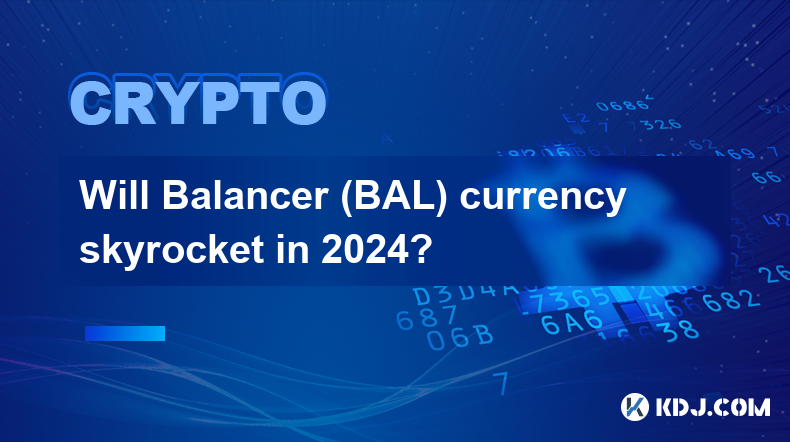-
 Bitcoin
Bitcoin $102,163.2697
6.02% -
 Ethereum
Ethereum $2,150.5881
19.90% -
 Tether USDt
Tether USDt $1.0002
-0.01% -
 XRP
XRP $2.2816
8.03% -
 BNB
BNB $621.9127
3.90% -
 Solana
Solana $160.9056
10.18% -
 USDC
USDC $0.9999
-0.01% -
 Dogecoin
Dogecoin $0.1919
12.84% -
 Cardano
Cardano $0.7428
12.87% -
 TRON
TRON $0.2549
2.81% -
 Sui
Sui $3.9413
20.96% -
 Chainlink
Chainlink $15.6333
15.00% -
 Avalanche
Avalanche $21.5896
11.76% -
 Stellar
Stellar $0.2857
10.70% -
 Shiba Inu
Shiba Inu $0.0...01415
12.36% -
 Bitcoin Cash
Bitcoin Cash $418.6912
17.25% -
 UNUS SED LEO
UNUS SED LEO $8.8588
1.73% -
 Pi
Pi $0.6406
10.47% -
 Hedera
Hedera $0.1918
10.27% -
 Toncoin
Toncoin $3.2151
7.17% -
 Hyperliquid
Hyperliquid $23.1281
10.85% -
 Litecoin
Litecoin $93.2866
5.66% -
 Polkadot
Polkadot $4.3578
11.64% -
 Monero
Monero $297.8483
6.26% -
 Dai
Dai $1.0002
0.00% -
 Bitget Token
Bitget Token $4.4492
5.91% -
 Ethena USDe
Ethena USDe $1.0003
-0.04% -
 Pepe
Pepe $0.0...01078
32.09% -
 Bittensor
Bittensor $417.8303
16.87% -
 Uniswap
Uniswap $5.6674
18.46%
Will Balancer (BAL) currency skyrocket in 2024?
Balancer (BAL) currency's potential for skyrocketing in 2024 is supported by its growing DeFi market, innovative liquidity model, governance participation, DeFi protocol integrations, partnerships, and supply limitations.
Dec 08, 2024 at 08:28 pm

Will Balancer (BAL) Currency Skyrocket in 2024?
Introduction:
Balancer (BAL) is a decentralized autonomous organization (DAO) that provides automated market making (AMM) services for digital assets. The BAL token is the native cryptocurrency of the Balancer ecosystem and is used for governance, staking, and trading fees. With its innovative approach to liquidity provision and governance, Balancer has garnered significant attention within the blockchain industry.
Factors Influencing the Potential Price Appreciation of BAL:
1. Growing DeFi Market:
The DeFi market has experienced rapid growth in recent years as investors seek alternative investment options and greater control over their assets. Balancer, as a leading provider of AMM services within DeFi, stands to benefit from the continued expansion of this market.
2. Innovative Liquidity Provision Model:
Balancer's unique liquidity provision model, known as "Smart Pools," allows users to create and manage custom pools of assets. This innovative approach offers flexibility, higher returns, and reduced risk for liquidity providers compared to traditional AMMs.
3. Governance and Community Involvement:
Balancer is a DAO where BAL holders have the power to shape the platform's future through voting on proposals. This participatory governance model fosters community involvement and alignment, which can contribute to the long-term success of the project.
4. Integration with Other DeFi Protocols:
Balancer has integrated with numerous other DeFi protocols, including Uniswap, Chainlink, and Aave. These integrations increase the utility of the BAL token and facilitate its use within the broader DeFi ecosystem.
5. Partnerships and Collaborations:
Balancer has forged partnerships with reputable companies in the blockchain industry, including Circle, Coinbase, and Polygon. These collaborations enhance the credibility and visibility of the platform, attracting new users and investors.
6. Low Token Supply and Buyback Mechanism:
Balancer has a limited total supply of 100 million BAL tokens. The platform also implements a buyback and burn mechanism that removes a portion of BAL tokens from circulation, reducing supply and potentially driving up the price.
7. Speculative Interest and Market Sentiment:
Cryptocurrency markets are highly speculative, and investor sentiment plays a significant role in price movements. If positive sentiment towards Balancer persists, it could contribute to a surge in demand for the BAL token.
Conclusion:
The factors outlined above suggest that Balancer has the potential to experience significant price appreciation in 2024. However, it is important to note that cryptocurrency markets are volatile and influenced by numerous factors. Investors are advised to conduct thorough research and consider their risk tolerance before making any investment decisions.
Disclaimer:info@kdj.com
The information provided is not trading advice. kdj.com does not assume any responsibility for any investments made based on the information provided in this article. Cryptocurrencies are highly volatile and it is highly recommended that you invest with caution after thorough research!
If you believe that the content used on this website infringes your copyright, please contact us immediately (info@kdj.com) and we will delete it promptly.
- Ethereum (ETH) Price Surges Past $2,000 as Trump's Trade Deal and Pectra Upgrade Ignite Bullish Momentum
- 2025-05-09 05:25:12
- Cryptocurrency market pushes higher, buoyed by US-UK trade deal
- 2025-05-09 05:25:12
- Binance Coin (BNB) Outperforms the Altcoin Market, Setting New All-Time Highs
- 2025-05-09 05:20:12
- The U.S. legislation that would establish stablecoin regulation failed to take a huge step closer to reality
- 2025-05-09 05:20:12
- Unstaked Quietly Proves Why It May Be the Best Crypto Right Now
- 2025-05-09 05:15:12
- As the Bitcoin Price Drives Toward $150,000, the ripple effect across the altcoin market is already being felt.
- 2025-05-09 05:15:12
Related knowledge

Is Ethereum smart contract call fee high? How to optimize costs?
May 08,2025 at 09:35am
Is Ethereum Smart Contract Call Fee High? How to Optimize Costs? The world of Ethereum smart contracts has revolutionized the way we think about decentralized applications and blockchain technology. However, one of the most frequently discussed topics within this realm is the cost associated with executing smart contract calls. In this article, we will ...

Is Ethereum Layer2 fee low? How to use it cheaper?
May 08,2025 at 03:56am
The question of whether Ethereum Layer 2 solutions offer lower fees and how to use them more economically is a topic of great interest within the cryptocurrency community. Ethereum's Layer 2 solutions have been developed to address the high transaction fees and scalability issues associated with the main Ethereum network. In this article, we will delve ...

How to calculate Ethereum network fee? How to reduce transaction costs?
May 08,2025 at 02:15am
Understanding and managing Ethereum network fees is crucial for anyone involved in transactions on the Ethereum blockchain. The network fee, also known as gas fee, is the amount of Ether (ETH) required to successfully conduct a transaction or execute a smart contract on the Ethereum network. Calculating these fees and finding ways to reduce them can sig...

What is Ethereum Gas Fee? How to optimize Gas Fee to save costs?
May 08,2025 at 03:43am
Ethereum gas fees are a crucial aspect of interacting with the Ethereum blockchain. Understanding and optimizing these fees can significantly impact the cost-effectiveness of transactions and smart contract interactions. In this article, we will delve into what Ethereum gas fees are, how they are calculated, and provide detailed strategies for optimizin...

How to perform MOVE cross-chain transfer? What to do if the gas fee is too high?
May 07,2025 at 08:03pm
Introduction to MOVE Cross-Chain TransferCross-chain transfers have become an essential part of the cryptocurrency ecosystem, allowing users to move assets between different blockchain networks. One of the popular protocols for achieving this is the MOVE cross-chain transfer. This article will guide you through the process of performing a MOVE cross-cha...

How is the DYDX liquidation price calculated? How is the forced liquidation mechanism?
May 08,2025 at 06:49am
The DYDX liquidation price and the forced liquidation mechanism are crucial aspects of trading on the dYdX platform, a decentralized exchange that allows users to trade perpetual contracts. Understanding these concepts is essential for managing risk and maximizing potential returns. In this article, we will delve into the details of how the DYDX liquida...

Is Ethereum smart contract call fee high? How to optimize costs?
May 08,2025 at 09:35am
Is Ethereum Smart Contract Call Fee High? How to Optimize Costs? The world of Ethereum smart contracts has revolutionized the way we think about decentralized applications and blockchain technology. However, one of the most frequently discussed topics within this realm is the cost associated with executing smart contract calls. In this article, we will ...

Is Ethereum Layer2 fee low? How to use it cheaper?
May 08,2025 at 03:56am
The question of whether Ethereum Layer 2 solutions offer lower fees and how to use them more economically is a topic of great interest within the cryptocurrency community. Ethereum's Layer 2 solutions have been developed to address the high transaction fees and scalability issues associated with the main Ethereum network. In this article, we will delve ...

How to calculate Ethereum network fee? How to reduce transaction costs?
May 08,2025 at 02:15am
Understanding and managing Ethereum network fees is crucial for anyone involved in transactions on the Ethereum blockchain. The network fee, also known as gas fee, is the amount of Ether (ETH) required to successfully conduct a transaction or execute a smart contract on the Ethereum network. Calculating these fees and finding ways to reduce them can sig...

What is Ethereum Gas Fee? How to optimize Gas Fee to save costs?
May 08,2025 at 03:43am
Ethereum gas fees are a crucial aspect of interacting with the Ethereum blockchain. Understanding and optimizing these fees can significantly impact the cost-effectiveness of transactions and smart contract interactions. In this article, we will delve into what Ethereum gas fees are, how they are calculated, and provide detailed strategies for optimizin...

How to perform MOVE cross-chain transfer? What to do if the gas fee is too high?
May 07,2025 at 08:03pm
Introduction to MOVE Cross-Chain TransferCross-chain transfers have become an essential part of the cryptocurrency ecosystem, allowing users to move assets between different blockchain networks. One of the popular protocols for achieving this is the MOVE cross-chain transfer. This article will guide you through the process of performing a MOVE cross-cha...

How is the DYDX liquidation price calculated? How is the forced liquidation mechanism?
May 08,2025 at 06:49am
The DYDX liquidation price and the forced liquidation mechanism are crucial aspects of trading on the dYdX platform, a decentralized exchange that allows users to trade perpetual contracts. Understanding these concepts is essential for managing risk and maximizing potential returns. In this article, we will delve into the details of how the DYDX liquida...
See all articles




















































































